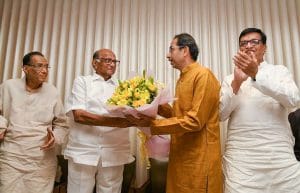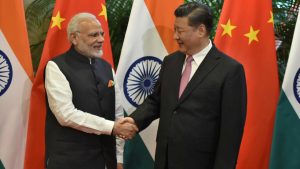A dismal picture: Why India’s rape problem is becoming worse
Summary
Usually, we hear about violent gang rape stories in societies that have broken down, or conflict zones. In India there are 4 of these in a day. And there is something that tells young men that it is ok to gang-rape women, and even murder them for fun.
A young woman in Hyderabad faced every woman’s worst nightmare. Her two-wheeler was deliberately punctured, she was kidnapped by 4 men, who raped her, and then burned her. Her body was discovered the next day. Some reports suggest that she was still alive when she was set aflame.
In Buxur (Bihar) the charred remains of a young woman – police are still ascertaining whether she was a minor – who had been raped and murdered, was found. There was another story about a law student gang-raped by 12 armed men, in Ranchi. In Puri, a woman was gang-raped by 4 men. If you start looking for stories around this, it is an abyss that stares back at you. There is no end to the gruesomeness of these crimes.
The anger against rapes is boiling over. The last time one saw this kind of rage publicly expressed was in the aftermath of the Jyothi Singh rape and murder in Delhi, in 2012. Known as the Nirbhaya case, the outrage at the brutality led the ordinary people, who would never otherwise take part in protests, to take to the streets in anger. It culminated in the appointment of the Justice Verma committee to look at amendments to criminal laws that dealt with violence against women in general, and sexual violence against women in particular. Parliament diluted some of the recommendations of the committee but passed the amendments in 2013. Seven years later, the rapists and murderers of Jyoti Singh are still alive, living off taxpayer’s money. One of them, six months shy of being an adult at the time of the rape, was released, and is free to commit a crime again.
The data is dismal. There were 38,947 rapes in the Republic of India, in 2016. Or 107 rapes every single day. Of these, the National Crime Records Bureau (NCRB) says that 2,167 are gang rapes. That is almost 6 gang rapes every single day. The numbers are slightly better in the 2017 report, the number of rapes reported dropped to 92 a day, but the NCRB has stopped reporting gang rape data separately while starting to report rapes by age. It starts with the rapes of those under the age of 6. Further reading of the report has even more depressing data points. Of the 17,807 cases that came to trial for rape, in 2016, there were 4,475 convictions – a 25 percent conviction rate; and of the 732 gang rape cases that came up for trial, 260, or 35 percent, were convicted. A large number of cases never made it to court.
Parliament has been discussing rape. And amongst the comments heard is why we must lynch rapists. While popular sentiment, and public rage may indeed impel such actions, the fact remains that the state cannot go around lynching people without trial. The other extreme of this ‘take them out and hang them’ stance is ‘we need more laws’ view.
We do not need more laws to curb rape. A glance at the laws will tell you that we have enough and more. The problem is twofold. The first is implementation. At the core of the breakdown of implementation is an overworked police force that neither has the time, nor the training to handle violence against women. Add to this a criminal justice system that works at the pace of a lame snail, and you have people getting away with a crime forever. And, between the cop station and the trial courts is where the system breaks down. Not enough rapists are going to jail. And, even when they do, it takes far too long to put them there, and they don’t serve enough time.
The second problem is the elephant in the room – that is the way men in India are brought up and socialised. This is a country that celebrates a movie like Kabir Singh which is all about the breach of consent. Popular drama calls this breach of consent, love. We tell young men that if you behave like Neanderthals, stalk women, make sexist comments, and act like savages – then it is considered manly. It is believed that 99 percent of the rape cases in India go unreported. And, most of these are committed inside the household by the husband on the wife. If young men grow up in households where consent is not considered important, it is likely that they will grow up to be older men who don’t consider consent to be important.
Usually we hear about violent gang rape stories in societies that have broken down, or conflict zones. In India there are 4 of these in a day. And there is something that tells young men that it is ok to gang-rape women, and even murder them for fun. That is something that most women find it so very difficult to come to terms with. That for some kinds of men, women are just objects to use and dispose of. And, those men could be anyone.
Harini Calamur writes on politics, gender and her areas of interest are the intersection of technology, media, and audiences.
Read Harini Calamur’s columns here.

Elon Musk forms several ‘X Holdings’ companies to fund potential Twitter buyout
3 Mins Read
Thursday’s filing dispelled some doubts, though Musk still has work to do. He and his advisers will spend the coming days vetting potential investors for the equity portion of his offer, according to people familiar with the matter









 Listen to the Article
Listen to the Article  Daily Newsletter
Daily Newsletter













